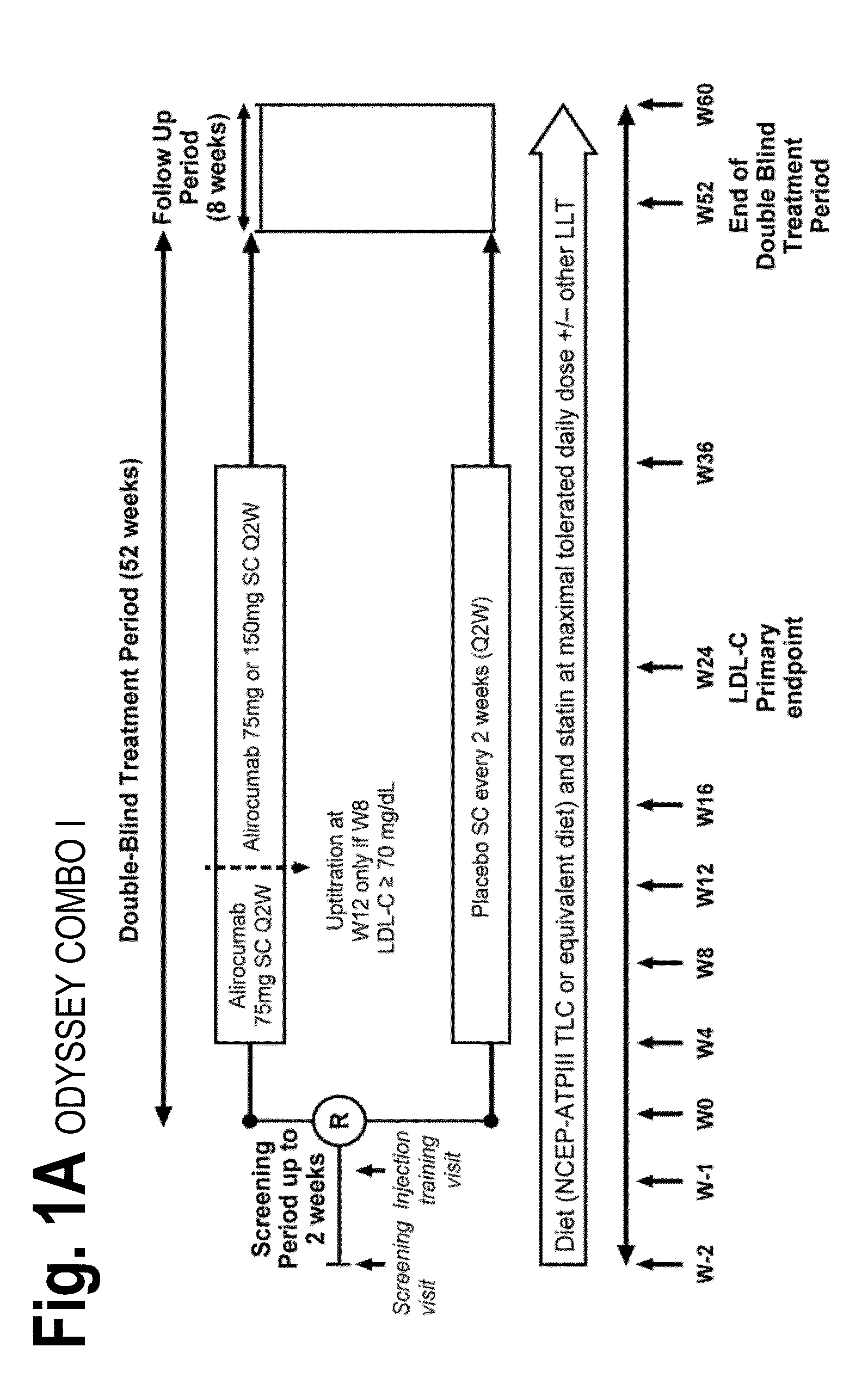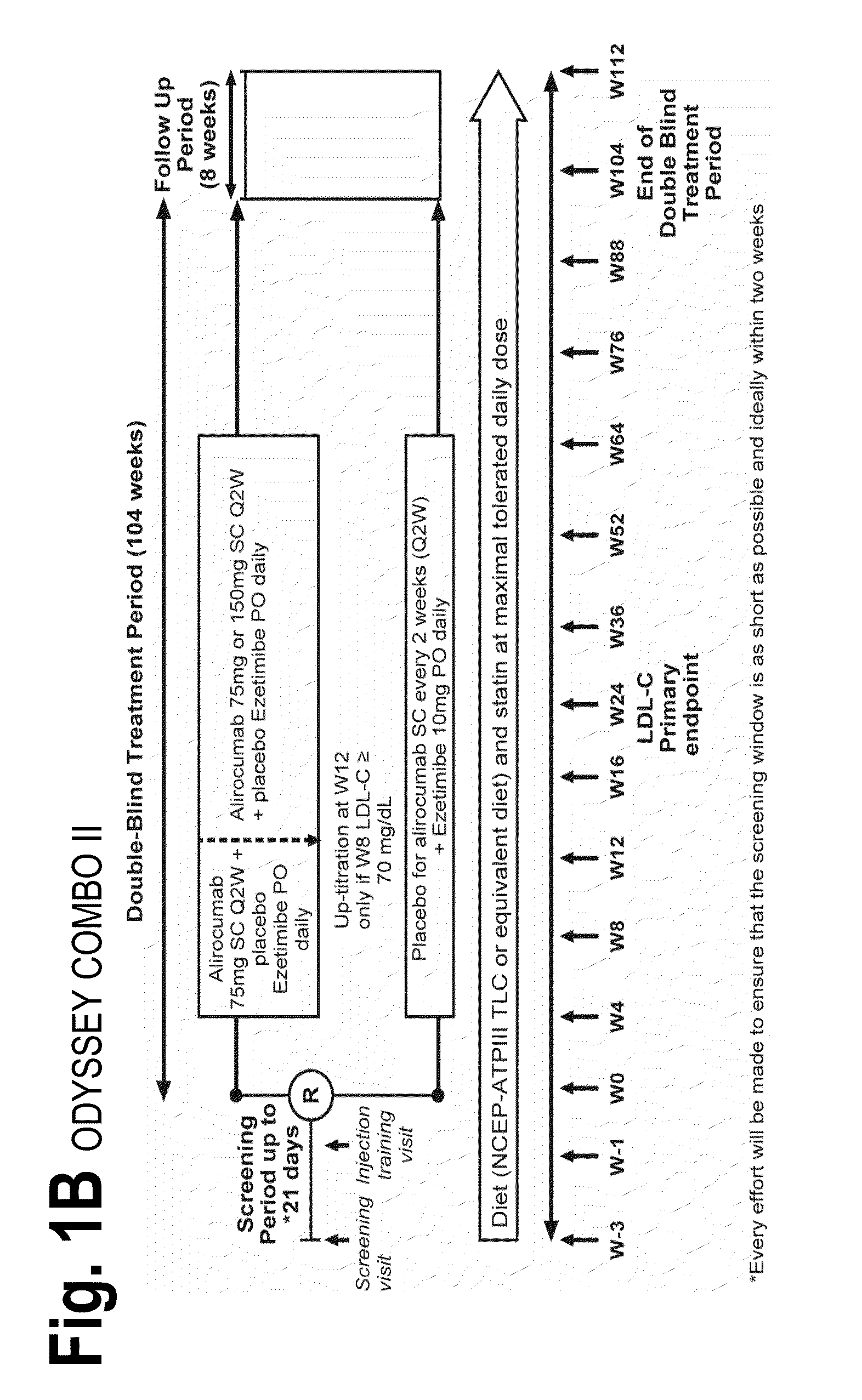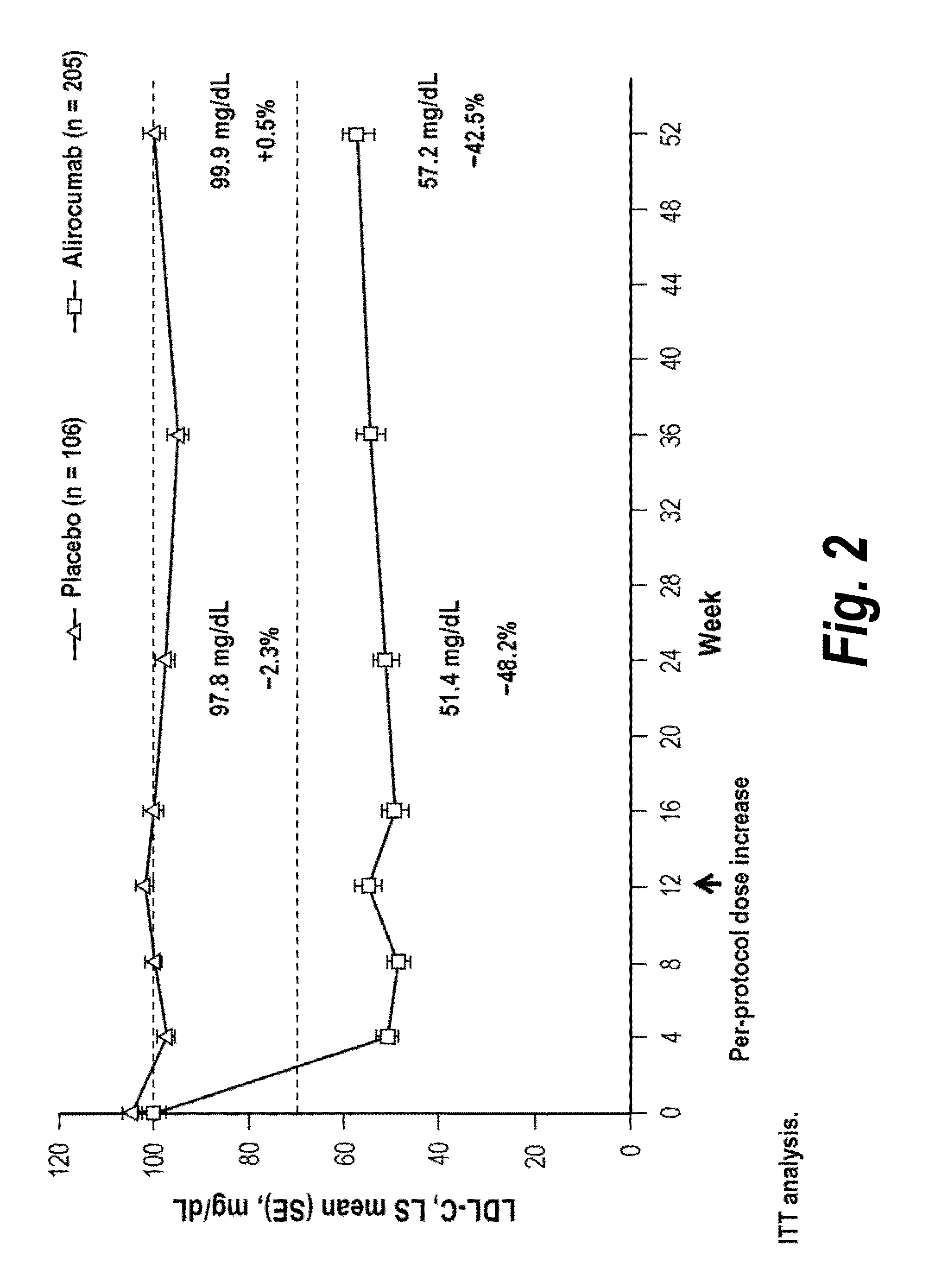Methods for treating high cardiovascular risk patients with hypercholesterolemia
a hypercholesterolemia and high cardiovascular risk technology, applied in the field of hypercholesterolemia treatment for high cardiovascular risk patients, can solve the problems of poor control of low-density lipoprotein cholesterol in patients at risk of cardiovascular disease, and achieve the reduction of apolipoprotein b100, at least one hypercholesterolemia-associated, and the effect of improving the patient's apolipoprotein
- Summary
- Abstract
- Description
- Claims
- Application Information
AI Technical Summary
Benefits of technology
Problems solved by technology
Method used
Image
Examples
example 1
Generation of Human Antibodies to Human PCSK9
[0108]Human anti-PCSK9 antibodies were generated as described in U.S. Pat. No. 8,062,640. The exemplary PCSK9 inhibitor used in the following Example is the human anti-PCSK9 antibody designated “mAb316P,” also known as “Alirocumab.” mAb316P has the following amino acid sequence characteristics: heavy chain variable region (HCVR) comprising SEQ ID NO:1; light chain variable domain (LCVR) comprising SEQ ID NO:6; heavy chain complementarity determining region 1 (HCDR1) comprising SEQ ID NO:2; HCDR2 comprising SEQ ID NO:3; HCDR3 comprising SEQ ID NO:4; light chain complementarity determining region 1 (LCDR1) comprising SEQ ID NO:7; LCDR2 comprising SEQ ID NO:8; and LCDR3 comprising SEQ ID NO:10.
example 2
Efficacy and Safety of Alirocumab, a Fully Human PCSK9 Monoclonal Antibody (“mAb316P”), in High Cardiovascular Risk Patients with Uncontrolled Hypercholesterolemia on Maximally Tolerated Doses of Statins
Introduction
[0109]The objective of the COMBO I and II studies was to evaluate the efficacy and safety of alirocumab (“mAb316P”) as add-on therapy to stable, maximally tolerated daily statin therapy, with or without other lipid-lowering therapy, in patients with hypercholesterolemia at high cardiovascular risk. COMBO I was placebo-controlled and patients may have received other lipid-lowering therapies in addition to statin therapy; COMBO II compared alirocumab with ezetimibe in patients receiving statin therapy (but no other lipid-lowering therapies). Each of the COMBO studies was randomized, double-blinded, and placebo-controlled. Both studies utilized a starting dose of alirocumab 75 mg every 2 weeks (Q2W; administered as a 1 ml solution via auto-injector). Patients with LDL-C leve...
example 3
Long-Term Safety and Tolerability of Alirocumab in High Cardiovascular Risk Patients with Hypercholesterolemia not Adequately Controlled with their Lipid Modifying Therapy: A Randomized, Double-Blind, Placebo-Controlled Study
Introduction
[0256]This study was undertaken to assess the long-term safety and tolerability of alirocumab in patients at high cardiovascular risk who are not at LDL-C goal. This population that is not at LDL-C goal on optimized LMT represents a highest risk group with a well identified unmet medical need that can be addressed by adding alirocumab to their LDL-C modifying therapies. Two sets of results are reported: (1) a pre-specified interim analysis was performed when all patients reached one year and approximately 25 percent of patients reached 18 months of treatment; and (2) the final analysis of the safety population, when all patients had completed the study.
Study Objectives
[0257]The primary study objective was to evaluate the long-term safety and tolerabi...
PUM
| Property | Measurement | Unit |
|---|---|---|
| concentration | aaaaa | aaaaa |
| concentration | aaaaa | aaaaa |
| concentration | aaaaa | aaaaa |
Abstract
Description
Claims
Application Information
 Login to View More
Login to View More - R&D
- Intellectual Property
- Life Sciences
- Materials
- Tech Scout
- Unparalleled Data Quality
- Higher Quality Content
- 60% Fewer Hallucinations
Browse by: Latest US Patents, China's latest patents, Technical Efficacy Thesaurus, Application Domain, Technology Topic, Popular Technical Reports.
© 2025 PatSnap. All rights reserved.Legal|Privacy policy|Modern Slavery Act Transparency Statement|Sitemap|About US| Contact US: help@patsnap.com



